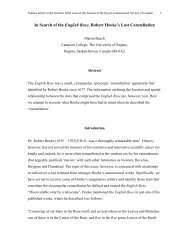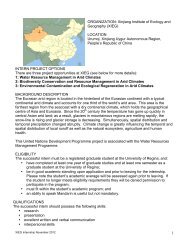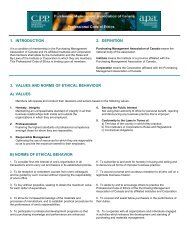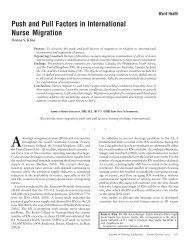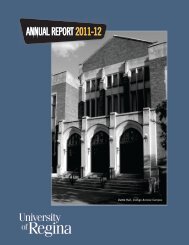The Indigenous Land Claims in New Zealand and Canada
The Indigenous Land Claims in New Zealand and Canada
The Indigenous Land Claims in New Zealand and Canada
Create successful ePaper yourself
Turn your PDF publications into a flip-book with our unique Google optimized e-Paper software.
<strong>The</strong> Canadian CasesBefore exam<strong>in</strong><strong>in</strong>g the two Canadian agreements, we will first look at an important precursor to both,the Mackenzie Valley Pipel<strong>in</strong>e Inquiry<strong>The</strong> Mackenzie Valley Pipel<strong>in</strong>e InquiryIn 1974, a consortium of mult<strong>in</strong>ational oil companies (called Arctic Gas) made an applicationto the Canadian government to build a pipel<strong>in</strong>e for carry<strong>in</strong>g natural gas from the fields <strong>in</strong> theMackenzie Delta <strong>and</strong> Prudhoe Bay <strong>in</strong> Alaska to markets <strong>in</strong> southern <strong>Canada</strong> <strong>and</strong> the United States. InMarch 1974, Justice Thomas Berger was appo<strong>in</strong>ted to head an <strong>in</strong>quiry established to consider issuessurround<strong>in</strong>g the pipel<strong>in</strong>e. <strong>The</strong> proponents of the pipel<strong>in</strong>e espoused a modernization perspective ondevelopment. <strong>The</strong>ir views were challenged by Aborig<strong>in</strong>al groups <strong>and</strong> others argu<strong>in</strong>g from adependency perspective.Arctic Gas <strong>and</strong> other proponents of the pipel<strong>in</strong>e argued that <strong>in</strong>dustrialization <strong>in</strong> northern<strong>Canada</strong> was “<strong>in</strong>evitable, desirable, <strong>and</strong> beneficial – the more the better” (Usher 1993, 105). To thatextent, they did not deny that the process would have negative impact on traditional Aborig<strong>in</strong>alsociety. In fact, <strong>in</strong> their view development “required the breakdown <strong>and</strong> eventual replacement ofwhatever social forms had existed before” (Usher 1993, 104). <strong>The</strong>y agreed that the process would bepa<strong>in</strong>ful for Aborig<strong>in</strong>al peoples but from it would emerge a higher st<strong>and</strong>ard of liv<strong>in</strong>g <strong>and</strong> a betterquality of life. In addition to their views on the desirability of <strong>in</strong>dustrialization <strong>and</strong> the <strong>in</strong>evitability ofmodernization, proponents of the project held the view that “all Canadians have an equal <strong>in</strong>terest <strong>in</strong>the North <strong>and</strong> its resources” (Page 1986, 114). This view was based on the ‘colonial’ belief that title toall l<strong>and</strong> <strong>and</strong> resources had passed from Aborig<strong>in</strong>al people to the Crown which was ‘at odds’ with theposition of Aborig<strong>in</strong>al peoples <strong>and</strong> the recent (at the time of the Inquiry) Calder decision.Aborig<strong>in</strong>al groups challenged these views. <strong>The</strong>y agreed that the pipel<strong>in</strong>e project would<strong>in</strong>troduce “massive development with <strong>in</strong>calculable <strong>and</strong> irreversible effects like the settlement of the9



